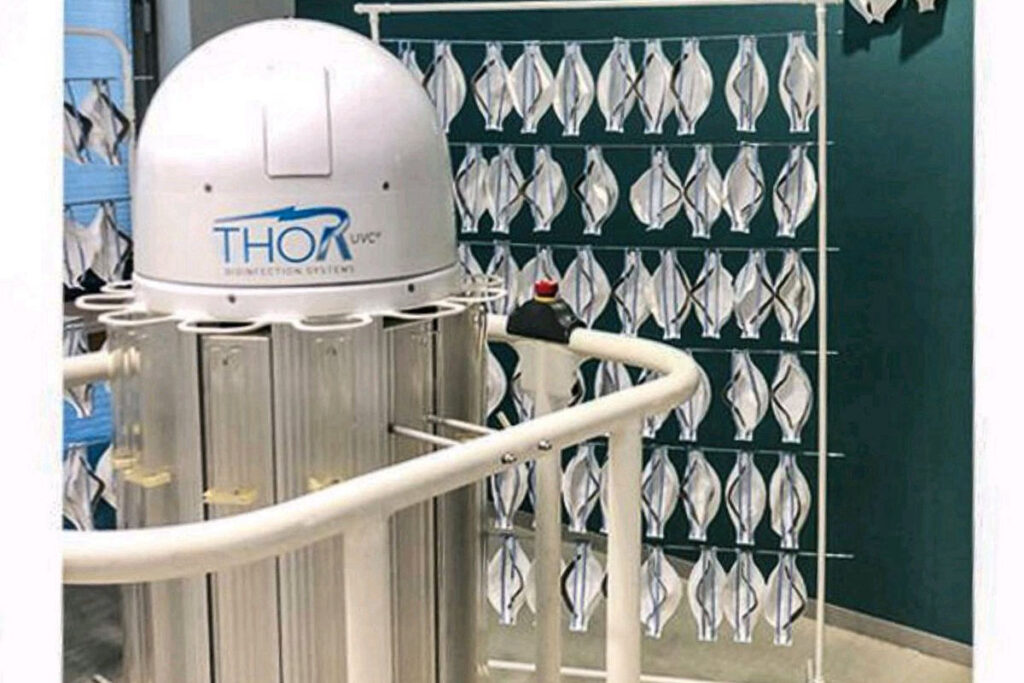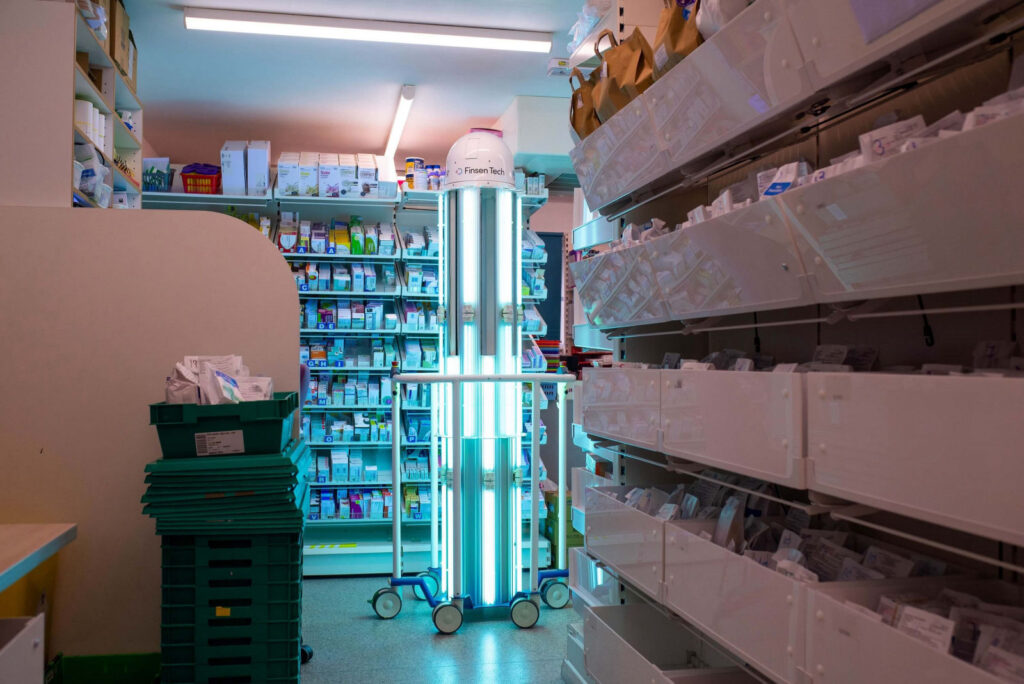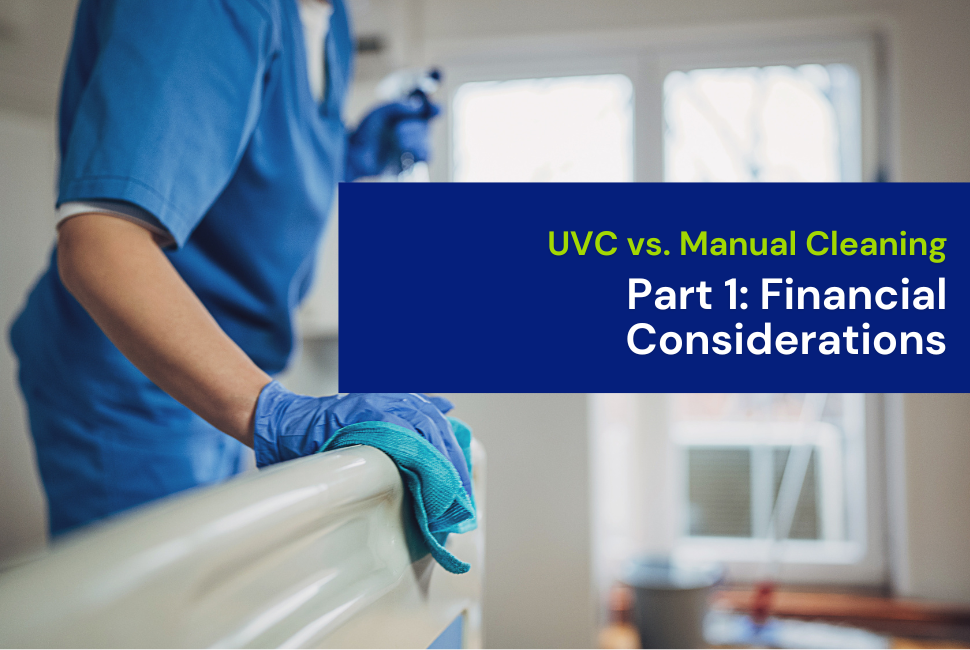Yes – at Zaans Medical Centre in the Netherlands, a study was conducted in 2020 with the aim of definitively answering this question.
Can UVC be used to disinfect masks and respirators?
Yes – at Zaans Medical Centre in the Netherlands, a study was conducted in 2020 with the aim of definitively answering this question.
Their clinical team, unaffiliated with Finsen Tech, tested our THOR UVC® product for its effectiveness in terminally disinfecting surgical masks and respirators against S. aureus, a potential HCAI (healthcare-associated infection) and frequent co-pathogen of COVID-19.
Results showed a reduction in the incidence of S. aureus following UVC disinfection by a minimum of 99.99999%. They concluded that UVC disinfection is, in their words, ‘an effective, safe and scalable method for reuse of surgical facemasks and respirators.
THE CONTEXT OF THE STUDY
The need for PPE for healthcare workers became acute during the beginning of the pandemic, due to widespread global shortages and the need to prevent workers from contracting the disease and becoming unable to work. An associated issue was the shortage of available respirators for the treatment of patients afflicted with the virus.
As a result, the Dutch National Institute for Public Health and the Environment approved the reuse of facemasks and FFP2 respirators (the type most commonly deployed for COVID-19 treatment), following hydrogen peroxide and steam sterilisation treatment.
The Zaans Medical Centre team identified a potential opportunity for greater efficiency and efficacy in performing this sterilisation via the use of UVC decontamination, in their words, a ‘scalable solution to mitigate shortages’.

The goal
The team aimed to ensure that UVC disinfection could achieve a 99.99999% reduction in the incidence of the co-pathogen S. aureus on the exterior of the facemask, which would provide sufficiently strong evidence that UVC disinfection could be deployed in addition to the already sanctioned (but likely less scalable) hydrogen peroxide and steam sterilisation.
Their method
The team used the Finsen Tech THOR UVC disinfection device for the test. They measured the incidence of the S. aureus virus on various face masks, all at a one-metre distance from THOR UVC.
A range of different disinfection cycle intensities was used, all deployed over the course of one minute.
The types of masks and respirators tested included standard white and blue surgical masks, a KN95 respirator, an FFP2 Aura respirator, among others commonly used as COVID-19 PPE or for COVID-19 treatment.
The results
The team successfully identified that the THOR UVC was capable of delivering a sufficient intensity of UVC to yield at least a log7 (99.99999%) reduction in S. aureus on the respirators’ surface facemasks tested making them safe for reuse.
They additionally found that:
– The UVC disinfection process could be repeated multiple times. They repeated it three times in their testing, with no reduction in effectiveness.
– The masks themselves were not damaged by the disinfection process. They acknowledged that damage would be possible at higher doses, but not those necessary for the level of disinfection required for reuse.
– Visibly damaged respirators and masks should not be reused following disinfection – and that all masks and respirators should be visually inspected before disinfection, and the number of times they have been disinfected should be marked in case of any future reduction in efficacy.
– Face-fit of both masks and respirators does not change following disinfection.




